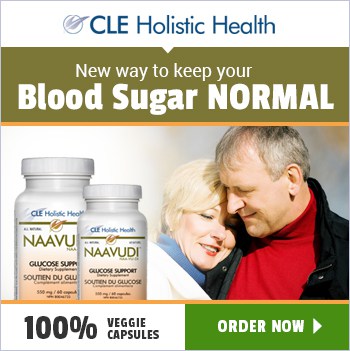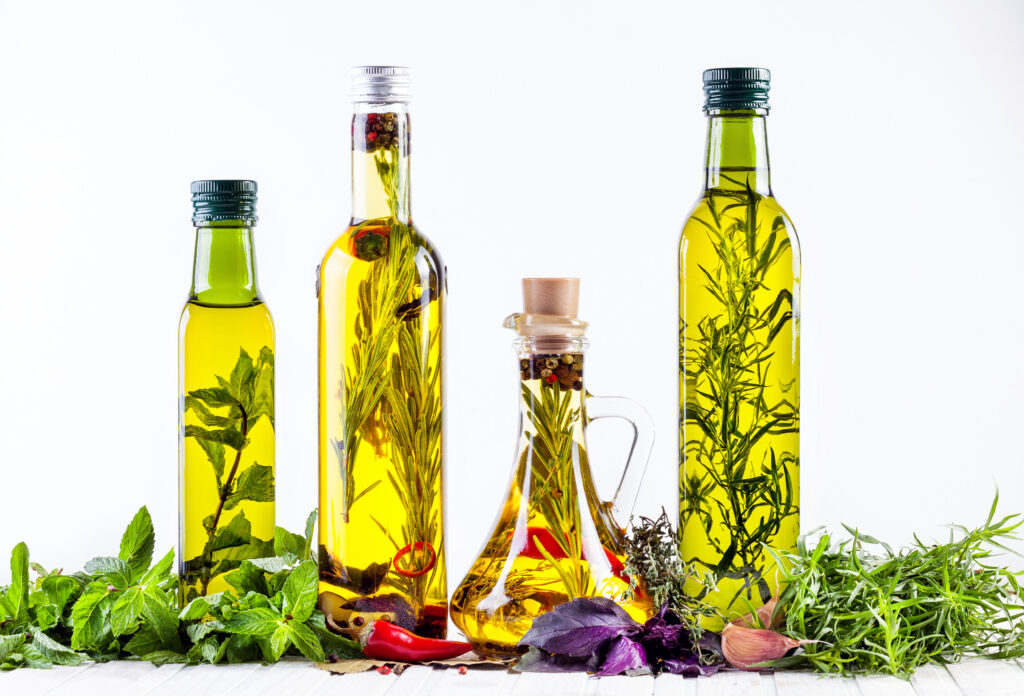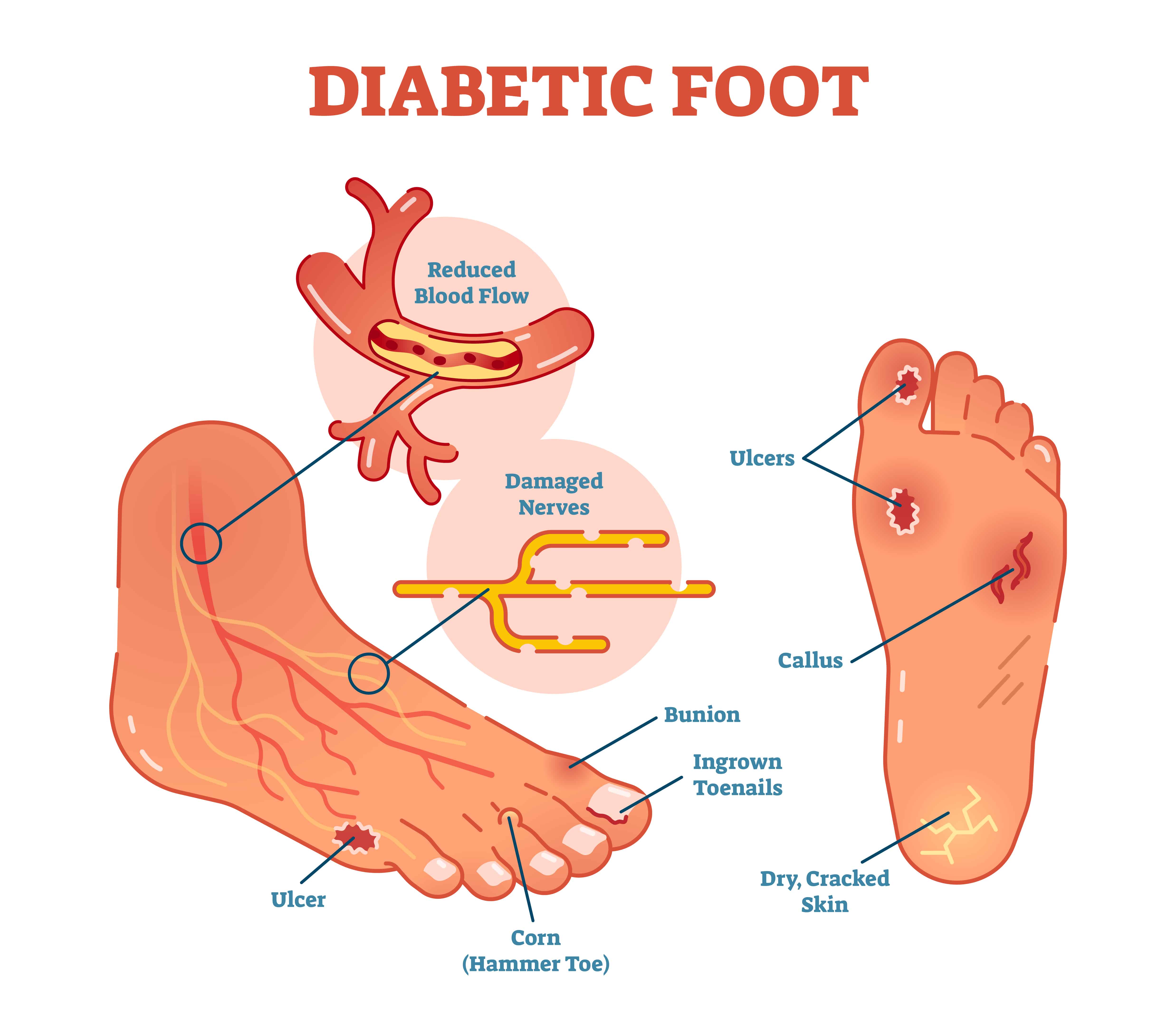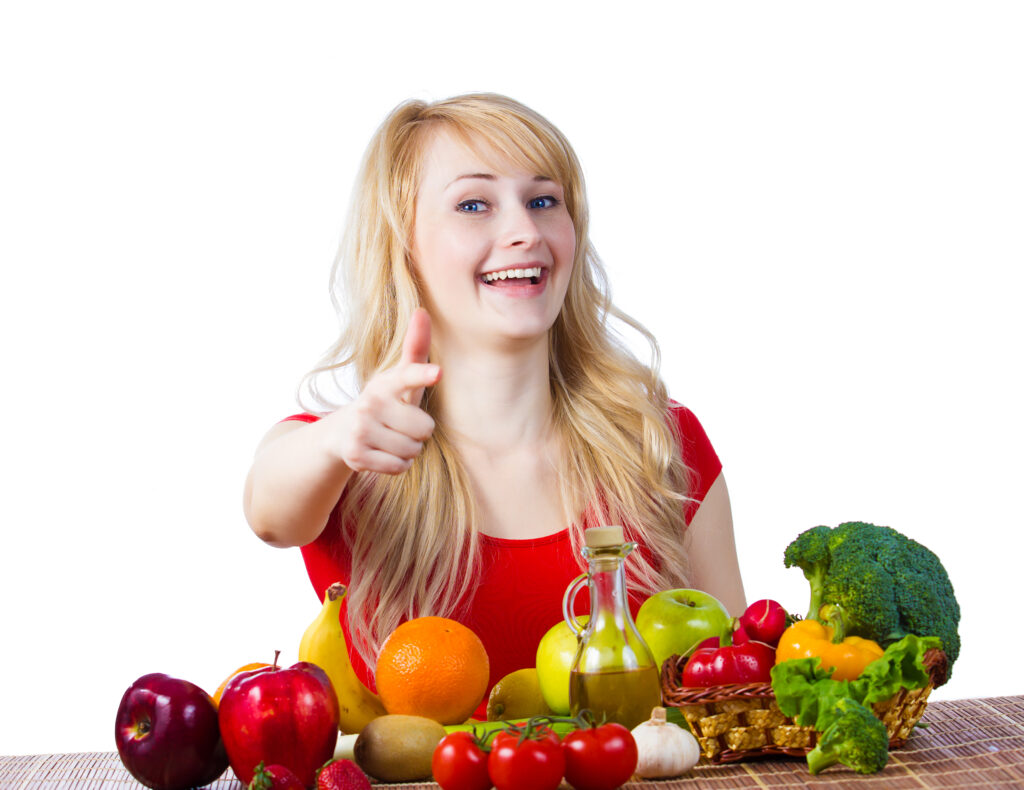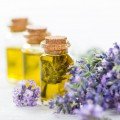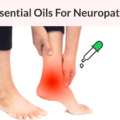Are we living in the age of a diabetes epidemic? You bet! With more than 30 million Americans suffering from the ailment; another 92 million battling prediabetes and nearly 12% of all deaths attributed to diabetic complications, without a doubt the condition has gained epidemic proportions.
In fact, diabetes is now the 3rd leading cause of death in the country. An extremely dangerous disease, diabetes causes both life threatening and life altering complications. For instance:
- Almost two-thirds of all diabetes patients die of cardiovascular complications linked to the disease.
- Nearly 10% of long-term diabetes sufferers (15 years or more) develop severe vision problems while 2% go blind.
- A frightening majority of diabetes patients suffer from kidney problems, and the condition is the leading cause of renal failure.
- Diabetes foot disease is a leading cause of limb amputations due to non-traumatic causes.
A chronic condition that never goes away, modern medicine treats diabetes by influencing insulin levels from the outside, thus controlling blood glucose levels.
- In type I diabetes, which is an autoimmune condition, the body loses its ability to produce insulin because the pancreatic cells responsible for the secretion of this hormone are killed by a faulty immune response.
- In type II diabetes, the body develops resistance to insulin and eventually loses the ability to produce enough insulin to keep blood glucose levels in check.
- In gestational diabetes, there is a marked increase in insulin resistance. Nearly 10% GD cases turn to Type II diabetes after childbirth.
Although reining in blood sugar levels is of paramount importance in diabetics, mitigating the risks of diabetes is about more than just controlling blood sugar levels. Unfortunately, this is where the myopic view of modern medicine has failed us.
So, Can Essential Oils Cure Diabetes?
Not at all!
And anybody who tells you otherwise is a snake oil salesman! Yes, some herbs are known to bring down blood glucose levels. Similarly, several essential oils are known to exert hypoglycemic effects.
But here is the problem, every time you eat, you are essentially putting glucose into your body. In a normal person, the levels of blood glucose are kept tightly under control through the secretion of insulin. This hormone helps to move the glucose from the bloodstream into the cells.
However, with a steady supply of glucose and not enough insulin to go around, what you have is a chronic and INCURABLE problem. At least at this point, nothing can or has changed this fact!
How Do Essential Oils Help To Control Diabetes?
Think of it this way; glucose is to your body what gasoline is to your car. As long as the gasoline gets into the fuel tank, it will keep your car up and running but a car doused in gasoline from the outside is an inferno in the making. Too much sugar does something similar, let me tell you how…
The fiery inflammation: In case of your body, the cells need glucose to fuel them but sugar in the bloodstream is kind of like gasoline on the outside with a match taken to it. Too much glucose causes a systemic inflammatory reaction in the body, no organ is spared the cell death that ensues. The brain, the pancreas, the kidneys, the liver, the blood vessels, the skin, the gastrointestinal system and the immune system all suffer.
Adding fuel to the fire: The worst part is that with the cells starved of fuel, the brain sends a response to your tummy to demand more food hence, the insatiable hunger or polyphagia, which is one of the main symptoms of diabetes. However, when you put more food into the system, you are also essentially sending more sugar into the blood stream, making matters worse.
The raging fire with no sign of water around: As sugar wreaks havoc from the outside on the starved cells, the kidneys go into panic mode trying to throw out the excess glucose but end up purging fluids, leading to dehydration and polydipsia or constant thirst. So, as you can imagine, the inflammation caused by the repeated cell bashing is widespread and chronic. Organs get overworked and fatigued and systems go awry.
While essential oils cannot cure diabetes, they can help you manage the complications caused by the ailment. For instance, even those oils that do not have a direct bearing on glycemic levels but are known to attenuate stress levels can help diabetics.
Because cortisol has a role to play in the insulin-glucose equation and in hypertension, any substance that lowers cortisol levels will have a direct bearing on blood glucose levels as well as the cardiovascular complications of diabetes (more on this in the next section).
Recommended Natural Product For Diabetes
If you are after an all-natural, clinically proven product for Type 2 Diabetes, look no further! Licensed by Health Canada, Naavudi has shown to lower your blood sugar (glucose) levels within 2-4 weeks with no side effects or sugar spikes.
How To Use Essential Oils For Diabetes Treatment?
For skin problems:
Almost 35% of diabetics suffer from skin issues; plus the condition is known to exacerbate existing dermal ailments. Dryness, skin infections, thin skin that bruises easily, oozing wounds, boils and lesions are all torturous realities of life for diabetics. But the worst part is that even minor wounds and fungal infections, which would normally go away on their own, turn into serious issues because of diabetes.
Fortunately, essential oils can help immensely when it comes to wound healing. Geranium, lavender, frankincense, German chamomile and palma rosa essential oils can go a long way in speeding up the wound healing process.
Since these oils also help to improve skin health and when coupled with the right carrier oils offer potent anti-inflammatory benefits, they can be used to both prevent and treat diabetes related skin issues.
A combination of these oils can also be used to clean ulcers and wounds and as a wet dressing or cold compress to reverse inflammatory reactions. Similarly, skin itching can be sorted with a blend of eucalyptus and peppermint essential oils while lavender, thyme and tea tree work well on dermal infections.
For nerve issues:
Nearly one half of all people who suffer from diabetes end up with some form of nerve pain and damage. In the majority of cases, diabetic neuropathy involves the legs and the feet and is experienced as numbness, pain and swelling in the extremities.
While studying the effects of aromatherapy massage on diabetic neuropathy, researchers from a Turkish University found that a 30-minute massage with a 5% blend of German chamomile, lavender, geranium, rosemary and lemon eucalyptus essential oils in coconut oil resulted in a 66% decrease in pain.
Copaiba, cypress and nutmeg essential oils are also known to help with chronic and intense diabetic neuropathy pain.
For stress relief:
Living with a chronic ailment, one that impacts every aspect of your life, is undoubtedly stressful. Unfortunately, increase in stress equates to higher amounts of cortisol in the body, which simply adds to the systemic inflammation caused by diabetes and the complications that result from it.
Once again, essential oils and aromatherapy offer remarkable and quick relief when it is needed the most. Diffusing the essential oils of sandalwood, vetiver, roman chamomile, lavender, rose geranium, rose, mandarin, sweet marjoram, petitgrain and neroli often provide immediate relief from overwhelming stress and depression/anxiety.
For cardiovascular complications:
Excess sugar in the blood stream leads to increased generation of reactive oxygen species or free radicals in the body. Lipid peroxidation, which is at the core of all diabetes related cardiac issues, is a direct result of this oxidative stress, and the oxidation of lipids is what leads to the hardening and clogging of arteries.
The antioxidant properties of essential oils help in multiple ways to limit the generation of free radicals, the damage they cause and the inflammatory response generated in response to this damage.
Moreover, the hardening of the arteries is both the cause and the effect of hypertension. Many essential oils also exhibit potent hypotensive effects. Together, these properties can help to limit the detrimental effect of hyperglycemia on the heart and the blood vessels.
For instance, a combination of ylang ylang, lavender and bergamot used for diffusion once a day causes a significant reduction in blood pressure, as per a Korean Study.
Similarly, the application of sandalwood essential oil (20% concentration) on the abdominal skin was found to reduce both systolic and diastolic pressures. The antioxidant effects of essential oils can also be used in the same way, incorporating topical and diffusion methods of administration.
The essential oils of clove, palma rosa, vetiver, rose scented geranium, curry leaves (Murraya koenigii), oregano, lemon balm and basil can be used topically and through diffusion to control the free radicals generated by diabetes.
For sexual issues:
What’s bad for the ticker is also bad for the pecker; so diabetes is a known cause of sexual issues, including the loss of sexual desire.
The aphrodisiac nature of essential oils such as jasmine, sandalwood, neroli and rose helps the mind to recover from the shock and stress of diabetes, which brings the heat back in between the sheets. Diffusing these oils and/or using them in a blend for intimate massage both offer noteworthy results.
For circulatory issues:
The blood vessels bear the maximum brunt of the ill effects of diabetes, from the small capillaries serving the skin to the largest arteries and veins in the body that serve the vital organs, all of them face intense heat. So, circulatory issues are the starting point of the degenerative effects of diabetes on the body.
Although modern medicine can offer little reprieve in the matter, essential oils have long been used to correct circulatory problems.
In fact, these extracts work really well to boost circulation, even when used topically. The essential oils of peppermint, cinnamon, clove, clary sage, rosemary, black pepper and ginger provide sensory (warming or cooling) effect that helps to draw blood to the treated area.
Use these oils on the extremities for diabetic foot problems and on the chest and upper abdomen to improve circulation to the heart and the lungs.
For fatigue and lethargy:
Because diabetes impacts the mind and the body, overwhelming fatigue and lethargy are among the awful symptoms the condition throws at you. Stimulants like coffee, nicotine and others offer little help because they increase blood pressure and heart rate, thus doing more harm than good.
In contrast, essential oils can perk you up without adversely affecting the pump and the plumbing. In particular, citrus oils such as those of mandarin, sweet orange, grapefruit, lemon and lime provide exceptional results against fatigue, dullness and lethargy.
Blend these with black pepper, ginger, basil and juniper to get a quick shot of energy without caffeine.
17 Best Essential Oils for Type 1 and Type 2 Diabetes
1. Coriander
The herb and the oil derived from its seeds and leaves both help in the fight against high blood glucose levels. These extracts increase the release of insulin in the pancreas and they enhance insulin sensitivity and absorption at the cellular level.
Coriander essential oil also helps against gastric and digestive problems.
2. Cinnamon
The fragrant oil derived from cinnamon bark has shown the potential to lower blood glucose levels in rodents. Furthermore, the spice is routinely used and prescribed to control diabetes in humans.
In addition to influencing the levels of blood sugar, cinnamon oil is known to alleviate fatigue and curb the incessant hunger and cravings for sugary foods that are hall marks of diabetes.
Because the aromatic extract improves pancreatic function, it directly impacts the levels of insulin in the body.
3. Melissa (lemon balm)
Often recommended in the treatment of diabetes, lemon balm oil works in multiple ways to control serum glucose levels and improve the utilization of insulin in the body. For starters, this oil acts as a potent hypoglycemic agent that enhances both the cellular uptake of glucose as well as its metabolism.
Even when administered in low quantities, the oil aids in regulating the function of the pancreas, which has a direct impact on insulin secretion. Because the extract also helps with digestive issues, it is assumed that it may lower the amount of glucose derived from food.
4. Clove
One of the most powerful antioxidants in nature, Clove essential oil helps to tackle the oxidative stress that leads to diabetes and the free radical damage caused by high glucose levels in the body. The oil is also effective against high cholesterol levels and dwindling insulin production.
5. Lemon
The zesty aroma of this essential oil not only helps to fight the fatigue brought on by diabetes but also aids in combatting food cravings that result from the ailment.
In addition, lemon essential oil helps to keep stress and depression at bay, which can be both the trigger and the symptom of diabetes.
6. Davana
Used for centuries as an anti-diabetic agent in Ayurveda, this extract helps to bring down blood glucose levels and also aids in tackling the symptoms of the disorder.
Davana essential oil is an effective analgesic agent that helps to deal with numbness and pain caused by diabetes. It also acts as an antiseptic, which makes it useful in tackling skin rashes and wounds in the extremities.
7. Lavender
Although this oil does not have a direct effect on serum glucose levels nor on the secretion of insulin in the pancreas, it does help against many of the symptoms of diabetes.
To begin with, lavender essential oil is extremely effective in alleviating stress. It is also an effective wound healing agent and an anti-inflammatory compound that annuls the effect of free radicals on the endocrine and the immune systems.
8. Ylang-ylang
An effective anti-stress agent that also doubles up as a potent sedative, the alluring aroma of ylang ylang oil is just the thing needed to calm a mind and body ravaged by diabetes.
Because it improves blood circulation and lowers blood pressure, it is also effective against the comorbidities of diabetes.
9. Thyme
This oil helps to not just neutralize oxidative damage but also to control the detrimental effects of diabetes on the cardiovascular system.
It is effective against mental fog and overall fatigue that are commonly experienced by diabetics. Plus, it is an antiseptic agent that promotes rapid wound healing and prevents the onset of skin infections.
10. Grapefruit
Another citrus oil that is prized for its ability to keep lethargy and fatigue away, grapefruit essential is at once calming and invigorating.
While it uplifts the moods, it shoos away negative emotions and mental tiredness and fog. It also boosts metabolism and is known to reduce food and sugar cravings.
11. Eucalyptus
This oil has made it to this lists thanks to its extraordinary ability to treat circulatory issues. The stimulating effect of eucalyptus oil draws blood to the feet and hands, thus preventing wounds and sores.
Plus, it is an uplifting agent that also works as a powerful analgesic. Also, a few studies suggest that eucalyptus oil can help in regulating blood glucose levels.
12. Cypress
Another strong circulatory agent, cypress essential oil has a naturally invigorating aroma and the ability to put the immune system back on track.
Since, at its core, diabetes is an auto-immune disorder, the impact of this oil on the immune and the nervous systems may very well help to stop the progression of pre-diabetes to diabetes.
13. Ginger
The warming oil with a spicy aroma can uplift the mood, boost circulation, tackle pain and numbness as well as deal with diabetic neuropathy. Plus, it is effective against sugar and food cravings as well as fatigue and lethargy.
14. Tea tree
No, this oil does not help to tame blood sugar levels nor does it directly impact insulin secretion. However, it is one of the most effective substances in nature when it comes to dealing with slow healing wounds.
Since sores and open wounds are often a concern for diabetics, and these can turn into life threatening complications if not controlled in time, this is a must-have essential oil for anybody who suffers from the condition.
15. Cumin
The tiny seeds of cumin as well as the oil derived from them are known to have a significant impact on the body’s ability to produce insulin as well as cellular sensitivity to it. Moreover, the oil regulates the immune system and helps against metabolic syndrome..
16. Rose geranium
This is one of the few substances in nature and otherwise that can help to prevent diabetes. Because it is an extremely powerful antioxidant, it helps to limit oxidative damage that eventually leads to pancreatic malfunction and a reduction in the secretion of insulin.
In addition to this, the soothing aroma of the extract acts as a potent stress buster.
17. Black pepper
Because black pepper essential oil influences the levels of digestive enzymes that are needed to convert starch into sugar, it has a direct effect on blood glucose levels.
This extract has immense potential as an antioxidant and a circulatory agent, which means that it can be used against diabetes as well as its complications.
You could also use the following essential oils for the management of diabetes and its related complications: sage, clary sage, rosemary, peppermint,
Are There Any Essential Oils That May Be Harmful For Diabetics?
Actually, there isn’t any oil that has a blanket ban on it, so to speak, although you will find many claims stating that one or the other oil should be avoided given its effects on glycemic levels and blood pressure.
But, let me clarify an extremely important fact about essential oils here – These extracts show varying and sometimes even opposing effects based on the method of administration; case in point limonene (principal ingredient of many citrus oils), which can cause a hypertensive effect after 30 minutes of inhalation but causes a hypotensive effect, when applied topically.
So, there aren’t any essential oils that should be absolutely avoided, but there are some that are contraindicated in case of certain circumstances. For instance:
Skin irritation:
Oils that contain a significant amount of cinnamaldehyde (cinnamon bark essential oil has 75% of this phytochemical) can cause skin irritation.
Ditto for citral rich oils like lemon myrtle, may chang, lemon grass and petitgrain that display extraordinary antioxidant and anti-inflammatory effect but can cause adverse dermal reactions.
Now, diabetes does not play a role in the skin irritation caused by these oils. But it impacts wound healing time, which means that even a rash can create trouble for those with diabetes. However, you won’t have a problem if these oils are used in the right dilution and after a patch test.
Hypotensive and hypertensive effects:
Ideally, you don’t want to add hypertension to your list of troubles when you are already grappling with diabetes. However, if you are using hypotensive drugs, some essential oils can add to the blood pressure lowering effect of your medication.
For instance, cinnamon bark and thyme essential oils can cause a reduction in blood pressure. Along the same lines, if you are hypertensive and are not taking medication for your high blood pressure, you may want to avoid the essential oils of camphor, hyssop and rosemary as well as the inhalation of grapefruit essential oil for 10 minutes or more.
Hypoglycemic and hyperglycemic effects:
A lot of oils are implicated for their hypo or hyperglycemic effects but here is the truth – All the studies on which these claims are based almost exclusively involved the oral administration of essential oils. If you intend to only use your essential oils for diffusion and topical application you have nothing to worry about.
As far as ingestion of essential oils is concerned, I always strongly recommend that they should be taken orally strictly under the supervision of a trained herbalist.
That said, if you are using these extracts orally and are on diabetes medication, essential oils that you should avoid for their hypoglycemic effects are anise, dill, coriander seed, cinnamon bark, cassia, lemongrass, myrtle, may chang and turmeric and the carrier oils of black seed and fenugreek seed.
Risks Of Using Essential Oils For Diabetes Management
- Essential oils can add to the effects of orthodox medication prescribed for lowering blood sugar level and blood pressure.
- Some essential oils can cause abnormal heart rhythm in those predisposed to arrhythmias, most notable among these are peppermint and cornmint essential oils.
- The anti-inflammatory properties of essential oils can tone down the conspicuous effects of increasing hyperglycemia like shin spots and other dermal symptoms.
- Diabetes is a chronic condition, but essential oils cannot and should not be used indefinitely without a break in between. Unfortunately, patients often come to rely on the benefits of these natural extracts and don’t take the required break. This can lead to sensitivity and the buildup of certain bioactives in the system.
- Those with diabetes induced kidney issues should be careful when using essential oils and other natural products because damaged kidneys lose the ability to properly and completely excrete the organic compounds found in natural and manmade substances.
Is It Safe To Add Essential Oils To Your Food?
Yes, but only the right oil and in the right quantity is safe when ingested. So the first thing I would recommend is that you consult an herbalist for oral essential oil usage. Also, when administering essential oils internally, it is crucial to keep a close watch on your blood pressure and blood sugar levels.
Remember, hyperglycemia is dangerous as is hypertension but hypoglycemia and hypotension can be fatal. So, if you are taking medication to control your blood pressure and blood glucose, it is particularly important to talk to an herbalist before consuming essential oils in any form, be it as a capsule or as a food additive.
Best Essential Oil Blends To Help in Type I and Type II Diabetes
- In 12 oz. of water, mix 1 drop each coriander and cinnamon essential oils and drink it once a day
- You can use 4 drops each of the essential oils of cinnamon bark and cypress diluted in a tablespoon of almond oil over the stomach and the bottom of the feet and over the chest every morning.
- Massage 3 drops of frankincense oil diluted in a tablespoon of olive oil over the back of the neck or on bottom of the feet for feeling relaxed after an insulin course.
- Regularly massage lavender oil diluted in a carrier on the feet prior to bedtime.
- Every morning massage clove oil diluted in a carrier over the feet.
Essential Oils For Diabetic Feet
Improving circulation, preventing the buildup of dead cells, keeping critters at bay, treating ulcers and lesions and dealing with dermal dryness should all figure in the treatment goals for diabetic feet.
The good news is that there are multiple oils and a host of ways in which these extracts can be used in diabetic foot care.
Using essential oils for diabetic feet:
Essential oil infused powders can be used to keep the feet dry and free of germs as you go about your day. Similarly, a warm soak with essential oil infused salt water can help to improve circulation, alleviate pain and provide stress relief.
Along the same lines, essential oil blends can be used for foot massage to keep the skin moisturized. These oils can also be used when exfoliating and to tackle the foul odor emanating from oozing ulcers and wounds.
The best essential oils for diabetic feet:
Lavender, rose geranium, German chamomile, helichrysum and myrrh can be used for their anti-inflammatory effects.
Thyme, tea tree, eucalyptus and camphor work well for fungal feet infections and rosemary and basil are effective against bacterial and viral infections.
Cypress, rosewood, ginger and peppermint can be used to boost circulation and for a relaxing foot massage after a workout.
A combination of peppermint, rosemary, tea tree and geranium works well for short foot soaks and for foot deodorant sprays.
Hot, painful and oozing wounds respond particularly well to a cold compress of lavender, German chamomile, frankincense and sandalwood essential oils blended in rosehip seed oil.
Things to remember when using essential oils for diabetic feet:
If you have loss of sensation, it is extremely important to be gentle with your feet because you certainly don’t want are micro tears and lesions that are easy to miss but do have the potential to create trouble. When exfoliating, go easy on your skin and avoid the urge to scrub too hard.
Similarly, use warm water instead of very hot water for foot soaks. When massaging your feet, don’t rub the skin back and forth which may cause tearing of very dry skin.
Diabetics have to be particularly careful if they are suffering from a complication called Necrobiosis lipoidica diabeticorum (NLD), which involves the appearance of bruises (without injury) on the legs, which eventually develop into lesions.
NLD is caused by the degradation of collagen and the inflammation of blood vessels. The net effect of the condition is a marked thinness of the skin.
It goes without saying that a foot massage may be too much for your skin to handle if it’s troubled by NLD. In this case, stick with a gentle application of the blend with minimum downward pressure.
If you are using essential oils to ward off fungal feet infections (tinea pedis/athlete’s foot) or nail infections, do not apply essential oils without dilution. These extracts are very strong and there is a very real risk of causing chemical burns if they are used undiluted.
An essential oil blend that handles most problems of diabetic feet
- 5 drops each of rose scented geranium and German chamomile
- 4 drops lavender and peppermint
- 5 drops ginger
- 2 drops each of clove and cinnamon
- 4 drops each of rosemary, thyme and tea tree
- 60 ml carrier oil mix (rosehip, sweet almond, coconut oils)
Preparation and usage:
Mix the oils and store in a dark glass bottle. Use as you would any foot massage oil/lotion. To use for a foot soak, add 1 tsp of the blend to the foot soak tub along with ½ cup salt.
Diet For Diabetics
While there are several different types of diabetes, as mentioned earlier, the basic premise behind the disease is that it affects the body’s ability to properly metabolize carbohydrates, leading to elevated blood glucose (blood sugar) levels.
Although there are a variety of factors that can contribute to the development of diabetes, an overwhelming amount of medical evidence has shown a strong link between the foods that a person eats and insulin resistance, which is a key driver of diabetic symptoms.
So what are some of the best foods to eat to help you manage your diabetes? Below are some key ideas and suggestions that I have compiled to help you develop a diabetic diet that will be effective without being too restrictive.
First Things First: The Basics Of A Diabetic Diet Plan
So what exactly is a diabetic diet plan?
Simply put, it is an eating plan that will help you regulate your blood sugar. When you do this, you take a big step towards managing your weight, and you also lower your risk of developing other conditions that are often offshoots of diabetes, including heart disease, high blood pressure, nerve damage, and/or kidney damage.
When you consume excess calories (especially those that come from foods that are high in carbohydrates and sugar), your body will respond by generating an unsafe spike in your blood glucose levels.
The reason for this is that when carbohydrates break down in your system, they quickly convert into glucose, basically “dumping” a high level of simple sugars into your bloodstream in a very short period of time.
This can send your blood glucose levels through the roof, causing the famous “sugar high” followed by the inevitable crash that leaves you feeling weak and super-hungry.
This can turn into a vicious cycle, because once this happens, you will seek foods that provide a quick “boost” just to help you feel normal again. Unfortunately, many times these foods are basically “more of the same”, creating yet another spike in your blood sugar levels.
If your blood glucose is not carefully managed, it can eventually cause significant health problems and longer-term complications. The best way to ensure that you avoid this undesirable scenario is to do your best to make healthy food choices that will keep your blood sugar levels within a safe range.
The types of foods that are commonly recommended for diabetics are foods that have what is known as a low Glycemic Index (GI), which means that they do not cause unsafe changes in your blood sugar levels.
Generally speaking, these types of foods are low in refined sugars and simple carbohydrates, both of which can wreak havoc on insulin levels when consumed in excess.
Low glycemic index foods will not only prevent the blood sugar “roller coaster”, but they are also generally healthier for the body due to being rich in protein and other vital nutrients, vitamins and minerals.
So what are some of these diabetes superfoods? Read on to find out.
Diabetes Superfoods
1. Beans
Beans are typically categorized as “starchy vegetables”, and they pack a serious punch when it comes to nutrients. They have an exceptionally high fiber content (just 1/2 cup of beans will give you about 33% of your daily fiber requirement), and they are also excellent sources of potassium and magnesium.
Although they are considered to be complex carbohydrates, beans also provide a healthy amount of protein; in fact, 1/2 cup of beans will supply your body with the same amount of protein as 1 full ounce of meat (minus the unwanted saturated fat).
Some of the top choices in the bean category are lima, pinto, navy, kidney, and black beans, and with their versatility as an ingredient, they can be used in a wide range of hot or cold dishes, either as a side item or as the “main event”. Quick tip: If you purchase canned beans, be sure to thoroughly drain them so that you can reduce the total sodium content.
2. Sweet Potatoes
Sweet potatoes are one of the simplest yet most nutritionally complete foods given to us by Mother Nature. They are rich in Vitamin A, a key antioxidant that promotes eye health, and they have a high fiber content as well.
What’s interesting is that although sweet potatoes are known for tasting sweeter than regular potatoes (hence the name), they actually rank lower on the Glycemic Index than regular potatoes do. The main reason for this intriguing difference is that sweet potatoes break down differently in your system than do regular potatoes, the latter being much more of a catalyst for blood sugar spikes than the former.
3. Leafy Green Vegetables
Right about now, you’re probably hearing your mother’s voice in your head telling you to “Eat your vegetables”. Well, Mom was right (as always), because eating leafy green vegetables in particular is one of the healthiest things you can do for your body.
Leafy greens such as kale, spinach, collards, mustard greens, etc., are loaded with important nutrients including fiber, iron, calcium, and folate, and they’re also rich in phytonutrients, which are organic plant-based compounds that provide the body with a host of health benefits.
4. Berries
Berries are commonly referred to as “superfoods”, and for good reason: They are packed with antioxidants including vitamin A, vitamin C and vitamin E, all of which play a key role in boosting the immune system and defending the body against free radical damage.
Some of the best berries to incorporate into your diet include strawberries, blueberries, raspberries, and blackberries. You can add some (or all) of these berries into a delicious parfait, use them as toppings on your whole grain cereal or blend them up into a nutrient-packed smoothie.
5. Citrus Fruit
Citrus fruit contains abundant amounts of vitamin C, which is perhaps the best known antioxidant for promoting immune health.
Consider adding citrus powerhouses such as oranges, grapefruit, limes, and lemons into your diet to beef up your body’s defenses while also keeping your blood sugar intact.
6. Tomatoes
This humble red fruit (yes, tomatoes are technically a fruit) is one of the most versatile ingredients you can keep in your kitchen. Not only can it be used to create a variety of sauces and purees, but it can also be diced, sliced or chopped and added into a wide range of dishes as well.
One of the key nutrients in tomatoes is lycopene, which is a natural phytochemical that defends the body against disease and improves cognition. In addition, the tomato’s low glycemic properties make it a safe bet for regular use by diabetics.
7. Whole Grains
You have to be careful when you delve into the territory of whole grains, because some people think that if they eat any type of bread other than white bread, they’re eating “whole grains”. Unfortunately, this is often not the case.
In fact, many breads that appear to be “whole grain” are actually made from enriched wheat flour, which is a highly processed form of grain that is devoid of most of the key nutrients that whole grains provide.
What you need to look for are breads that provide the germ and the bran, as this is where all of the key nutrients reside. In addition, whole grain breads provide a healthy amount of fiber, which helps the body to moderate digestion and control blood glucose levels.
8. Fish
When we say “fish”, some qualification is necessary, because it will do your body no good to load up on breaded and deep fried fish. Instead, opt for grilled or baked varieties of fish that are rich in Omega-3 fatty acids, such as salmon, mackerel and tuna.
These Omega-3 fatty acids play a vital role in reducing inflammation in the body (a key contributor to diabetic symptoms), and they’re great for your heart as well.
9. Yogurt
Some caution should be exercised when it comes to the type of yogurt you choose, because there are many yogurt varieties out there that contain high levels of refined sugars, which will not help your blood glucose levels at all; these are the types of yogurts that you should avoid.
Instead, go for lower sugar varieties such as plain yogurt or Greek yogurt, and basically avoid any type of yogurt that contains high fructose corn syrup.
If plain yogurt seems a little too…well…plain for you, try using it as an ingredient in a fruit smoothie. That way, you still get the nutritional benefits of the yogurt (e.g., calcium, Vitamin D, etc.) without risking a bland flavor experience.
10. Foods Containing “Good” Fats
Not all fat is the enemy; in fact, there are such things as “good” fats (i.e., polyunsaturated and monounsaturated fats) that actually help your body maintain low cholesterol levels.
Examples of these types of fats include cashews, walnuts, avocados, almonds, and pecans, as well as olive and canola oils.
Diabetes Diet Plans
Now that you have a good idea of what types of foods you can eat to keep your blood glucose levels intact, below are a handful of different approaches that you can take to creating a diabetes diet plan that will serve this purpose as well.
1. The Plate Method
Recommended by the American Diabetes Association, this 7-step method places more of an emphasis on eating vegetables, but it is far as from a deprivation diet.
When you prepare your plate, try to fill half of it with some type of non-starchy vegetable (e.g., spinach, tomatoes, carrots, etc.), and then still a quarter of the plate with a protein such as lean beef or tuna.
The last quarter of the plate should be filled with some type of whole grain item, or perhaps a starchy food. Top it off with a serving of fruit, and then drink water or unsweetened coffee or tea for your beverage.
2. The Carb Counting Method
This method primarily involves keeping a close eye on the total amount of carbohydrates that you consume in your food. This will require you to diligently read your food labels, making sure to keep your total carb count well within the recommended daily allowance.
Just be sure to double check the total servings per container when you read these labels, as the carbohydrate count listed might only be for a quarter or a half of a serving.
3. The Glycemic Index Method
As mentioned earlier, the main objective behind a diabetic diet is to stick with foods that are low on the glycemic index. Many diabetics use the glycemic index as their gauge as to what foods they can consume, as well as the type of quantities they are allowed to consume.
A simple Google search for the terms “glycemic index” will yield a bevy of helpful resources to get you started.
Ketogenic Diet Type 1 Diabetes
Ever since Halle Berry attributed her good looks and health, despite being a Type 1 diabetes sufferer, to the Keto diet, there has been renewed interest in the nutritional regimen.
A high fat, medium protein and low carb diet that forces the body to use up its fat reserves for fuel, ketogenic diet helps to keep blood sugar levels in control and to shed the excess pounds.
The idea is to put not more than 20 gm. of carbs in the body. In about 3-4 days this leads to the depletion of all the sugar in the blood and compels the body to burn stored fats in order to produce an alternate energy source known as ketones.
As blood sugar levels plunge, so does the need to supply insulin from the outside to manage the transport of the glycogen into the cells. Also, because the stored fats are used up to meet the energy requirements of the body, you end up losing weight.
Is the ketogenic diet for you?
Ketogenic diet for Type 1 diabetes is not recommended for those who have any stage of a renal disorder. It is also not recommended for women who suffer from gestational diabetes or are breast feeding.
Because there is a drastic reduction in the consumption of sugar in this diet, you can only opt for it if you are in a position to rapidly change your medication. Most experts recommend that you should only go on this diet under the supervision of your doctor.
How much and what are you allowed to eat in a Ketogenic diet?
Calorie requirements will be standard and based on your weight loss needs. The thing to remember here is that 75% of your daily calorie intake should come from fats, 20% from proteins and just 5% from carbs.
This means bread, pasta and fries are off the table and so are a lot of sugar rich fruits like papayas, grapes, apples, bananas and others along with starchy veggies (bye bye sweet potato). Your grocery list should look something like this:
Get your proteins: Meat, organ meat, skin, egg, poultry, fish and shell fish are all allowed as long as you make sure that you pick organic products.
Nuts and seeds make for the perfect keto snacks as they offer protein and good fats. Brazil nuts, macadamia nuts, cashews, almonds, walnuts, pistachios, pecan nuts, sesame seeds, pumpkin seeds, chia seeds and flax seeds are great choices.
Stock up on the fats: Because most of your calories will come from fats, you get a lot of choices with this macro. Pick from butter, Greek yoghurt, cottage cheese, olive oil, coconut oil, avocados, cream, butter and cheese.
Go for high value nutrients: Fats and proteins won’t fill you up, but fiber rich veggies sure will. Plus, they will give you all the micronutrients you need.
Opt for low carb veggies like spinach, tomatoes, bell peppers, leeks, eggplant, onion, kale, lettuce, zucchini, cucumber, cabbage, cauliflower, celery, broccoli, artichokes and others. For your fruity needs, pick berries of all shapes and colors.
The limited amount of starch that you are allowed to consume can come from safe starches like squash, rice, sweet potato and potatoes. But remember that even a small serving of these can burn right through your daily allowance of carbs.
All for flavor: Go crazy with your herbs and even garlic, mustard, vinegar, lemon, pepper and other spices.
The Bottom Line
While diabetes is a condition that must be carefully managed, it doesn’t have to be debilitating to your diet. Use the tips and information outlined above to help you adjust your diet in order to keep your blood glucose levels in check, so that you can successfully manage your condition.
In addition, essential oils contain strong natural elements, and some may be irritating to the skin or even toxic for the body when not used correctly. For that reason, it is imperative to consult a health professional before using any of these essential oils in your body.
In my view, the use of essential oils is surely going to grow in coming decades and there will be a major hike in their clinical use in USA and across the globe.



